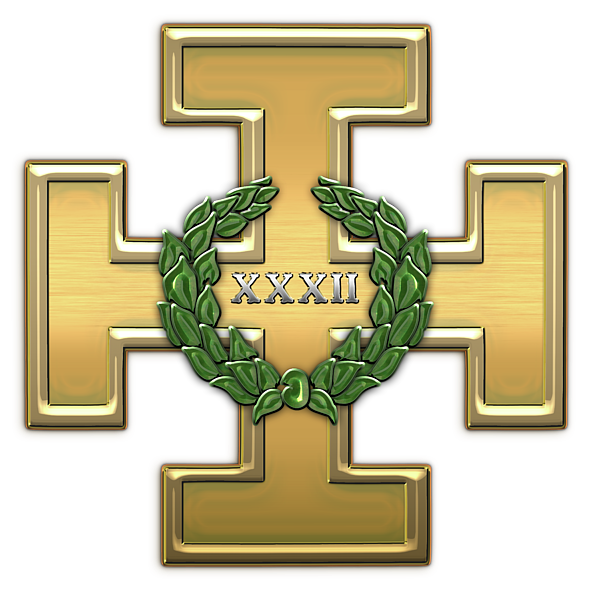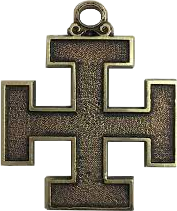The Ancient & Accepted Scottish Rite degrees are divided into 5 Parts and are as follows:
(1) Lodge of Perfection – 4th° to 14th°
(2) Chapter of Rose Croix – 15th° to 18th°
(3) Council of Kadosh – 19th° to 30th°
(4) Consistory / Master of Kadosh – 31st° to 32nd°
(5) Honorary 33rd°


consistory
master of Kadosh:
31st° to 32nd°
The Consistory Degrees are very different from all the preceding degrees. They attempt to illustrate the creation of the ideal balance between the spiritual and the temporal.
ANCIENT & ACCEPTED Scottish rite: 31st° DEGREE – Inspector Inquisitor
In Summary:
The 31st degree in the southern jurisdiction of the Scottish rite is known as the “Inspector Inquisitor” degree. This degree is focused on the idea of self-examination and reflection on one’s thoughts and actions. It also encourages the individual to take responsibility for their mistakes and strive to improve themselves. Additionally, it is sometimes mentioned as the judicial branch of the Scottish Rite and is often considered to be a culmination of the teachings of the Scottish Rite, which must be conferred in full ritual form.
Initial Note:
This degree teaches prayerful self-examination. The mistakes today should not be committed tomorrow. Simply, the daily look at one’s self to learn to live with the future.
Regalia Notes:
Though no apron is worn in the Tribunal, there was an apron that was to be worn when an Inspector Inquisitor visited an inferior body. That custom has been dispensed with but the apron is still a part of the history and symbolism of the degree, so it is displayed here.
It is of pure white lambskin with a Teutonic Cross embroidered in black and silver upon the flap.
The collar is white and at the point upon the breast is a gold triangle emitting rays with the letters ‘XXXI’ in the center. The jewel of the degree is a Teutonic Cross of silver worn with a white watered ribbon around the neck.
Duties are:
• Judge yourself in the same light as you judge others – consider both actions and motives.
For Reflection:
• Is a man a thief who steals a loaf of bread for his children?
Lessons:
• The good man is able to portray himself and his actions positively and not simply assert the absence of wrong in his life. Justice and mercy are two opposites that unite in the great harmony of equity. To aim at the best but be content with the best possible is true wisdom.
Important Symbols:
• Balance, heart, columns, sages, Tetractys.
Additional Notes:
In many of the previous degrees and particularly in Morals and Dogma, references to classic Egyptian religion and philosophy are made, but it is only here that we see the elaborate costuming and furnishings from this heritage. The leading feature of the Egyptian religion was its emphasis on eternal existence, reflected clearly in the majestic pyramids, mummification, and numerous talismans. The most important of these was the scarab, a beetle symbolic of immortality. Descriptions of these artifacts and their importance to ancient Egypt are found in the lengthy scrolls of papyrus compiled under the title The Book of the Dead.
The Book of the Dead is composed of some two thousand papyrus rolls found in various tombs, all of which contain formulas to guide the dead in their journey to everlasting peace in the realm of the gods. The title of these scrolls is more appropriately translated from the Egyptian as “manifested in the light” or “coming forth by day” a second title is best translated as “the chapter of making strong (or perfect) the Khu” (Budge, p. xxx)
There is a long tradition that connects modern speculative Freemasonry with the teachings of the ancient Egyptians. Dozens of books have been written that stress this association. Some scholars have even theorized that speculative Freemasonry originated in Egypt. The actual historical connections which confirm this theory are entirely lacking. Whatever importance is assigned to the Egyptian heritage in Masonry, our concern here is a path to immortality which the Egyptians elaborated on and illustrated in their writings in a dramatic fashion.
Sources:
Purchase ‘A Bridge To Light‘ by Rex R. Hutchens
Purchase ‘Morals & Dogma‘ by Albert Pike.

‘Inspector Inquisitor’
Please view the video on the left, for a more detailed explanation of the 31st° Degree.



